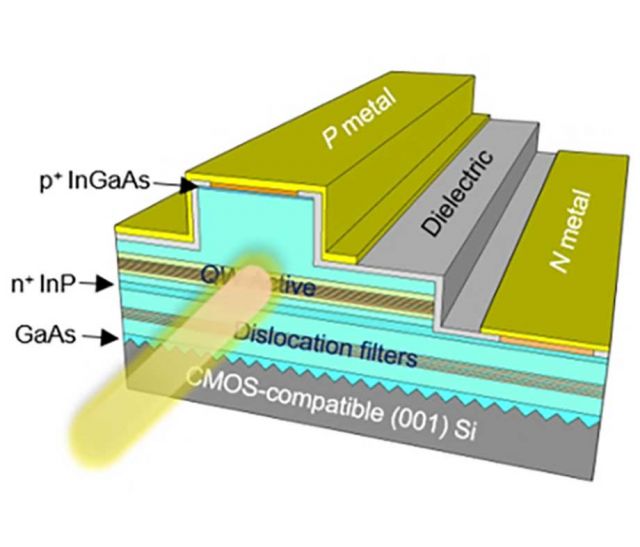Klamkin - DARPA Director's Fellowship
Prof. Jonathan Klamkin's DARPA project aimed at addressing energy-consumption issues associated with lasers, the sources of light in photonic integrated circuits (PICs)

Prof. Jonathan Klamkin, an associate professor in UC Santa Barbara’s Electrical and Computer Department, has received the Director’s Fellowship from the U.S. Defense Advanced Research Projects Agency (DARPA). The prestigious prize is awarded to only the top performers among recent recipients of the DARPA Young Faculty Award (YFA), a program established to encourage young scientists to pursue high-risk, high-reward research that could result in breakthrough technologies for national security.
“We’re extremely proud of Professor Klamkin for receiving a Director’s Fellowship,” said Rod Alferness, dean of the UCSB College of Engineering. “His work to increase the efficiency of lasers in photonic integrated circuits is a key step toward developing a truly foundational technology for next-generation energy efficient data centers and optical communication networks that underpin the internet. This is a tremendous recognition of his high-quality and groundbreaking work.”
The initial DARPA Young Faculty Award provided Klamkin up to $500,000 in funding for two years. The fellowship extends his research project by one year and provides up to $250,000 in additional funding to continue his contributions to the photonics revolution.
“While the funding enables our research for another year, the recognition that comes with this highly competitive award is as important,” said Klamkin, who was one of 36 scientists and engineers in the nation to receive the DARPA Young Faculty Award in 2018. “I'm grateful not only to DARPA and our program mentor, but especially to the students and researchers involved in this project for their continued hard work and enthusiasm.”
Klamkin’s DARPA project, "ASPIC: Attojoule Sources for Photonic Integrated Circuits,” is aimed at addressing energy-consumption issues associated with lasers, the sources of light in photonic integrated circuits (PICs). PICs transfer information with light instead of electricity. Solving efficiency issues is essential if PICs are to be reliable and reach their potential for large-scale integration, similar to what happened with electronic integrated circuits in the mid-20th century, when electronic integrated circuits became a mainstay in computers, smartphones, medical instruments, sensors, and automobiles. Klamkin, who runs the Integrated Photonics Laboratory, says he has been amazed at his team’s progress over the past two years.
The UCSB Current – "A Tremendous Recognition" (full article)